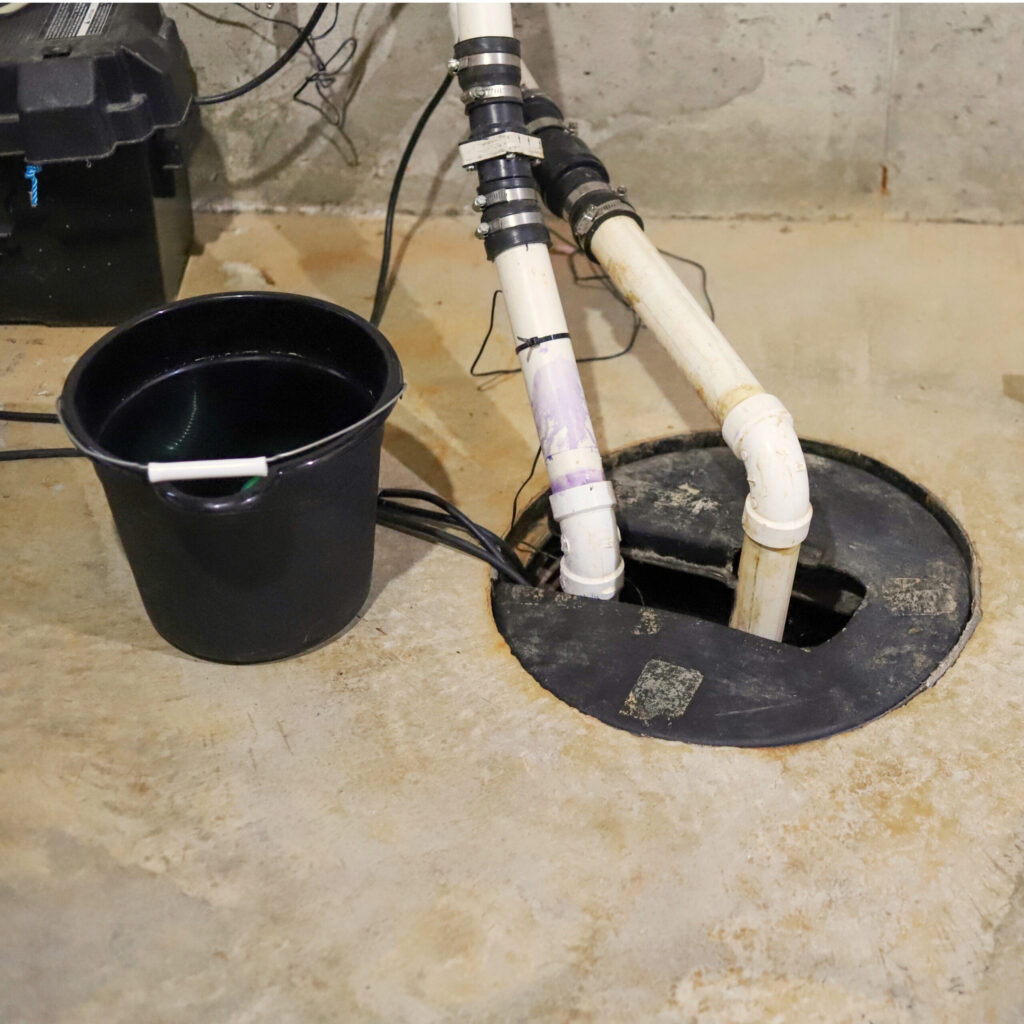
Sump pumps protect properties from water damage, especially in areas prone to heavy rain or flooding. Installed in the basement or crawl space, these systems help prevent water accumulation by pumping excess water away from the foundation. Check out our full list of sump pump benefits. However, like any mechanical system, these units must be tested regularly to ensure they work properly.
If a sump pump fails during a storm or period of heavy groundwater accumulation, the consequences can be severe. Homeowners could experience basement flooding, structural damage, mold growth, and costly repairs. To avoid these issues, routine sump pump tests are important.
In this guide, the plumbing professionals at Universe Home Services provide a detailed walkthrough of how to test both submersible and pedestal sump pumps.
How to Test a Submersible Sump Pump
Submersible sump pumps are designed to operate underwater and are placed inside the sump pit. They’re powerful and quieter than pedestal sump pumps, making them a popular option for homeowners. To test that they’re functioning correctly, follow these steps:
- Locate the sump pump: Ensure the sump pump is plugged in and check for any visible damage to the power cord or unit.
- Inspect the discharge pipe: The pipe that carries water away from your home should be free of debris and obstructions.
- Pour water into the sump pit: Slowly pour about 5 gallons of water into the sump pit to simulate rising groundwater levels.
- Observe the float switch: As the water level rises, the float switch should activate the pump. If it doesn’t, the switch may need to be replaced.
- Monitor pump operation: The pump should begin running and quickly remove water from the pit. If the pump runs but doesn’t remove water, check for blockages in the discharge line.
- Listen for unusual noises: Grinding, rattling, or excessive vibration could indicate a malfunction.
- Test the backup power source (if applicable): If your sump pump has a battery backup, unplug the main power and ensure the backup system activates.
If your sump pump fails any of these tests, it may require maintenance or replacement to keep your basement dry and protected.
How to Test a Pedestal Sump Pump
Pedestal sump pumps are mounted above the sump pit, with the motor positioned above water level. These pumps tend to last longer but can be louder. Testing a pedestal sump pump involves similar steps, with a few key differences:
- Check the power supply: Ensure the pump is plugged in and the power cord is in good condition.
- Inspect the float mechanism: The float on a pedestal pump is positioned differently than on a submersible pump. Ensure it moves freely and is not obstructed.
- Pour water into the pit: Slowly add water to the pit, making sure it reaches the float mechanism.
- Observe activation: The float should rise and activate the pump. If the pump doesn’t turn on, check for a stuck float or electrical issue.
- Confirm water discharge: The pump should quickly remove water from the pit. If not, inspect the discharge pipe for clogs.
- Listen for issues: If the pump sounds overly loud or makes unusual noises, it may need servicing.
- Test the backup power source (if applicable): Unplug the main power to ensure the backup system kicks in if installed.
If the pedestal sump pump doesn’t function correctly, it may need cleaning, repairs, or replacement.
Choose Universe Home Services for Sump Pump Services
Testing your sump pump regularly can save you from costly water damage, but if you encounter issues or suspect your pump isn’t working as it should, Universal Home Services is here to help. Our professional plumbers can inspect, repair, or replace your sump pump to ensure your home remains protected.
Schedule sump pump services with our team by contacting us online today.